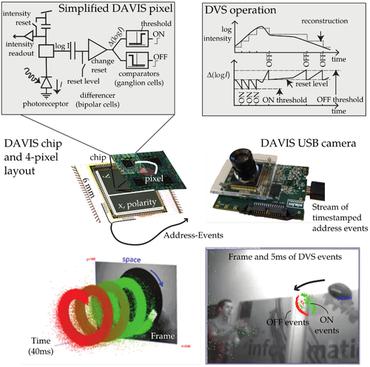Relating Events and Frames Based on Self-Supervised Learning and Uncorrelated Conditioning for Unsupervised Domain Adaptation
Event-based cameras provide accurate and high temporal resolution measurements for performing computer vision tasks in challenging scenarios, such as high-dynamic range environments and fast-motion maneuvers. Despite their advantages, utilizing deep learning for event-based vision encounters a significant obstacle due to the scarcity of annotated data caused by the relatively recent emergence of event-based cameras. To overcome this limitation, leveraging the knowledge available from annotated data obtained with conventional frame-based cameras presents an effective solution based on unsupervised domain adaptation. We propose a new algorithm tailored for adapting a deep neural network trained on annotated frame-based data to generalize well on event-based unannotated data. Our approach incorporates uncorrelated conditioning and self-supervised learning in an adversarial learning scheme to close the gap between the two source and target domains. By applying self-supervised learning, the algorithm learns to align the representations of event-based data with those from frame-based camera data, thereby facilitating knowledge transfer.Furthermore, the inclusion of uncorrelated conditioning ensures that the adapted model effectively distinguishes between event-based and conventional data, enhancing its ability to classify event-based images accurately.Through empirical experimentation and evaluation, we demonstrate that our algorithm surpasses existing approaches designed for the same purpose using two benchmarks. The superior performance of our solution is attributed to its ability to effectively utilize annotated data from frame-based cameras and transfer the acquired knowledge to the event-based vision domain.
PDF Abstract




 CIFAR-10
CIFAR-10
 N-Caltech 101
N-Caltech 101